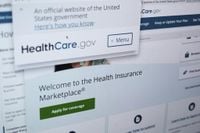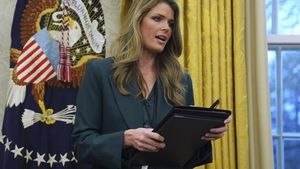American families are bracing for a seismic shift in health insurance costs as enhanced Affordable Care Act (ACA) premium tax credits are set to expire at the end of 2025—threatening to send premiums soaring by as much as 80 percent in some states and putting coverage out of reach for millions. The looming rollback, first reported in detail by Newsweek and echoed by state agencies in Minnesota and Pennsylvania, has sparked warnings from health economists, state officials, and everyday Americans who fear being priced out of essential care.
The enhanced subsidies, introduced in response to the COVID-19 pandemic through the American Rescue Plan Act of 2021 and extended by the Inflation Reduction Act of 2022, have been credited with doubling ACA Marketplace enrollment nationwide—from 11.4 million in 2020 to a record 24.3 million in 2025, according to data cited by Newsweek. These subsidies lowered the share of income most households had to spend on premiums, making comprehensive health insurance attainable for a broader swath of Americans, including many middle-class families, farmers, and small business owners.
But unless Congress acts by October 1, 2025, to extend the tax credits as part of its annual spending negotiations, the financial lifeline will vanish at year’s end. The result? Out-of-pocket premium payments are projected to rise by over 75 percent on average nationwide, with some states like Rhode Island and Pennsylvania anticipating increases of 85 and 82 percent, respectively, for their marketplace enrollees. In Minnesota, state officials warn that middle-class families, small business owners, and farmers will bear the brunt of the increases, with some seeing their monthly costs quadruple.
“These are not just numbers on a spreadsheet,” said Erika Helvick Anderson, Senior Director at MNsure, Minnesota’s health insurance exchange, in a statement reported by the Minnesota Commerce Department. “These are working families who may now have to choose between health insurance and other essentials.”
Real-world examples underscore the stakes: a Mankato couple in their early 60s earning $89,000 could see their monthly premium jump from under $500 to nearly $2,000. A Ramsey County family of three earning $112,000 might lose their tax credits and pay $170 more each month. MNsure estimates that 62 percent of its enrollees will see their costs rise in 2026, and more than 19,500 Minnesotans will lose all financial assistance.
Similar anxiety is brewing in Pennsylvania, where the state’s official exchange, Pennie, currently covers 500,000 people. Devon Trolley, Pennie’s executive director, told Erie Times-News that enrollment is expected to drop by 30 percent if the enhanced credits are not renewed. “We have many small business owners, independent contractors and farmers who have Pennie coverage,” Trolley said. “If their insurance costs go up, they might have to reduce staff or increase the cost of their product.”
For Renae Becker, a small business owner in Conneautville, Pennsylvania, the credits have been transformative. She and her husband saw their combined monthly premium plummet from $1,500 to just $178 after enrolling through Pennie. “It’s a godsend for everybody,” Becker said. “When you own a business, every dollar spent trickles down. This saves us a lot of money.”
But the relief may be short-lived. Pennsylvania health insurers have already requested average rate increases of 19 percent for individual plans and 13 percent for group coverage for 2026, regardless of whether the tax credits are extended, according to Pennsylvania Insurance Commissioner Michael Humphreys. “We realize that this is not an ordinary filing year for insurers, and Pennsylvanians should be prepared to see higher costs to their health insurance,” Humphreys stated in a recent news release.
The impact of higher costs extends beyond balance sheets. Health economist Benjamin Sommers, a professor at the Harvard T.H. Chan School of Public Health, told Newsweek that the end of the “generous” subsidies could mean an average increase of between 75 and 80 percent, and his research suggests that 3.7 million people could lose coverage and become uninsured. “Any time there is uncertainty in an insurance market, most insurers hedge their bets and raise premiums to provide more buffer against that uncertainty,” Sommers explained.
Health experts warn that as premiums rise and subsidies disappear, many healthier individuals may opt out of coverage, leaving behind a sicker insurance pool. This adverse selection could trigger even higher premiums for those who remain, a classic insurance market spiral. “First, most directly, most enrollees will pay more for their insurance,” said Jonathan Gruber, a former consultant to the Obama administration and a key architect of the ACA, in an interview with Newsweek. “Second, because enrollees are paying more, many will drop coverage—particularly the most healthy—raising premiums further for everyone else.”
Officials in Minnesota have echoed these fears. “We fear many Minnesotans will drop coverage altogether,” said Helvick Anderson. “That will lead to an older, sicker insurance pool, more uncompensated hospital care, and higher costs for everyone.” Commerce Commissioner Grace Arnold called the situation “a huge step backward,” criticizing Congress and President Trump for failing to extend the tax credits and warning that state-level solutions like Minnesota’s temporary reinsurance program—while softening the blow—are not permanent fixes.
Meanwhile, new federal rules are set to reduce enrollment windows, cut benefits, and add bureaucratic hurdles, further limiting access to affordable coverage, Minnesota officials warn. Without the state’s reinsurance program, premiums would jump an estimated 25 percent, but even with it, average increases of 16.2 percent for the individual market and 12.7 percent for small businesses are expected—the highest since 2017.
In Washington, the debate over extending the enhanced credits has become a flashpoint in broader budget negotiations. Senate Democrats have proposed a permanent extension, but Republicans have so far rejected the measure. Representative Robert Bierman, co-chair of the Minnesota House Health Finance and Policy Committee, was blunt in his assessment: “Make no mistake: this crisis is tied to H.R. 1 (the One Big Beautiful Bill Act) and the failure to extend advanced premium tax credits. Minnesota acted in bipartisan fashion to help where we could, but state-level solutions alone won’t be enough.”
As the 2026 open enrollment season approaches, Americans are being urged to review their coverage options and stay informed about how federal decisions could impact their premiums. The fate of millions now hangs on what Congress does next—and time is running out.
For families like the Beckers in Pennsylvania and the Mankato couple in Minnesota, the question is painfully simple: Can they afford to keep their health insurance when the bill comes due?




